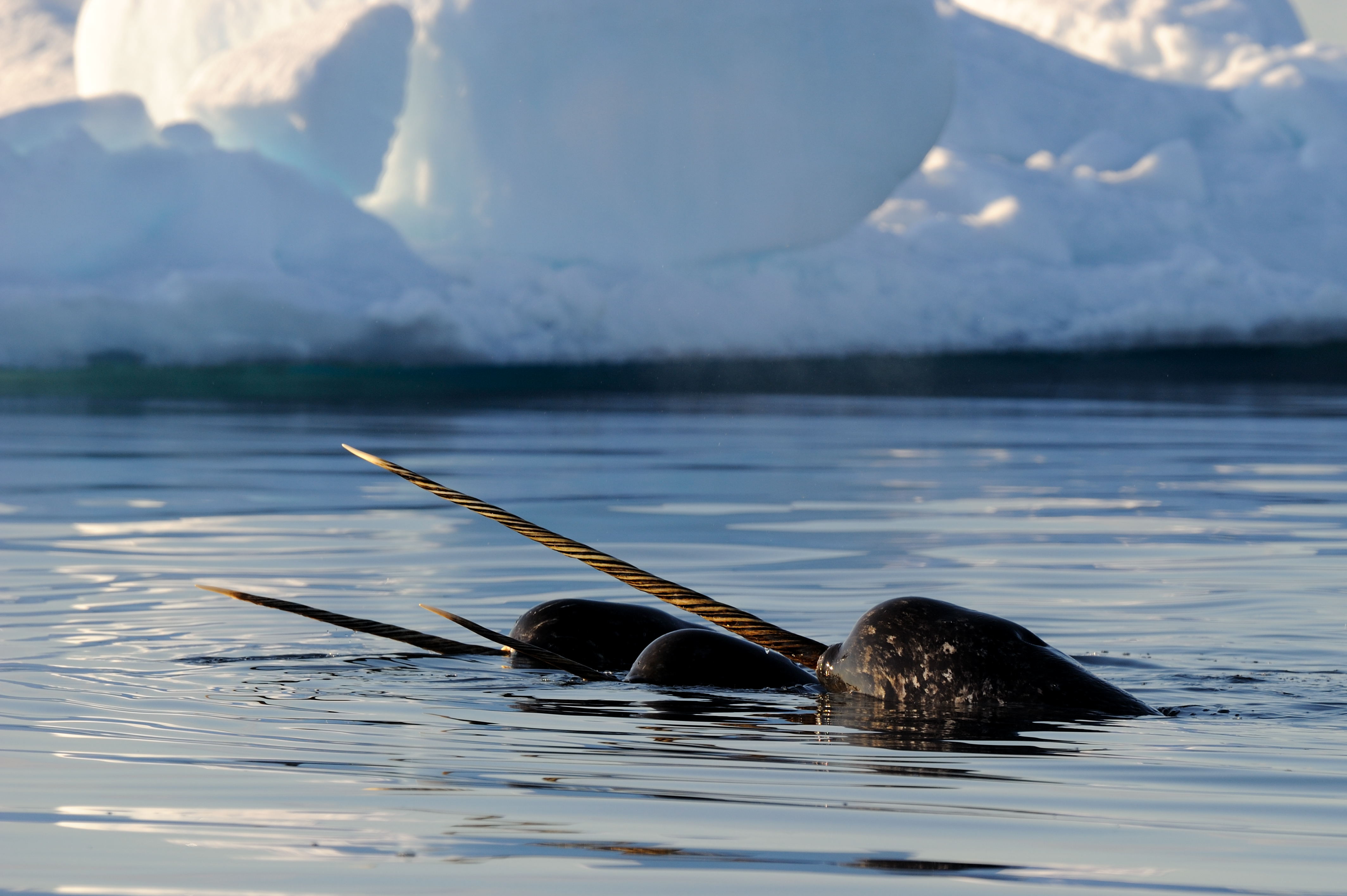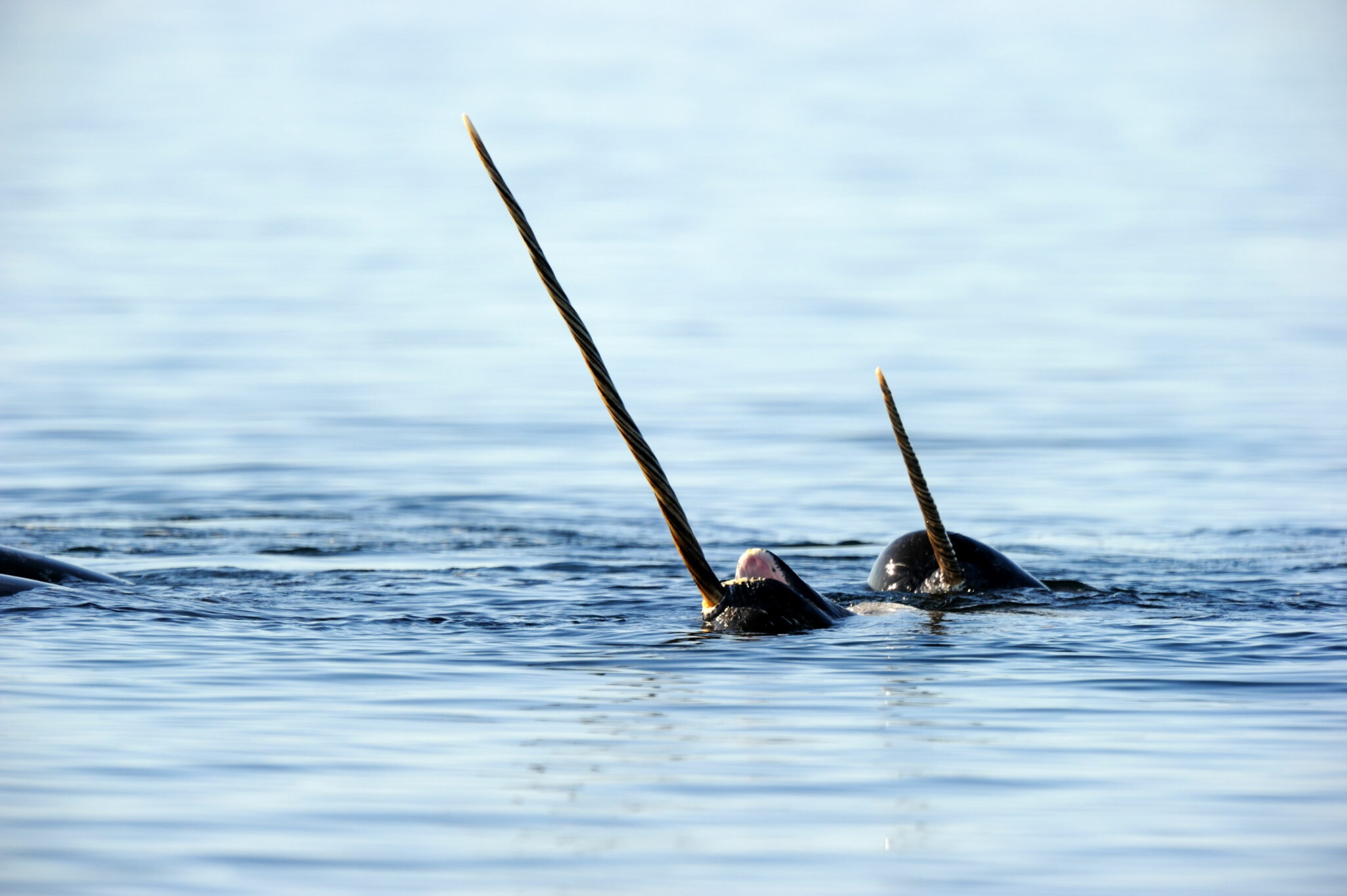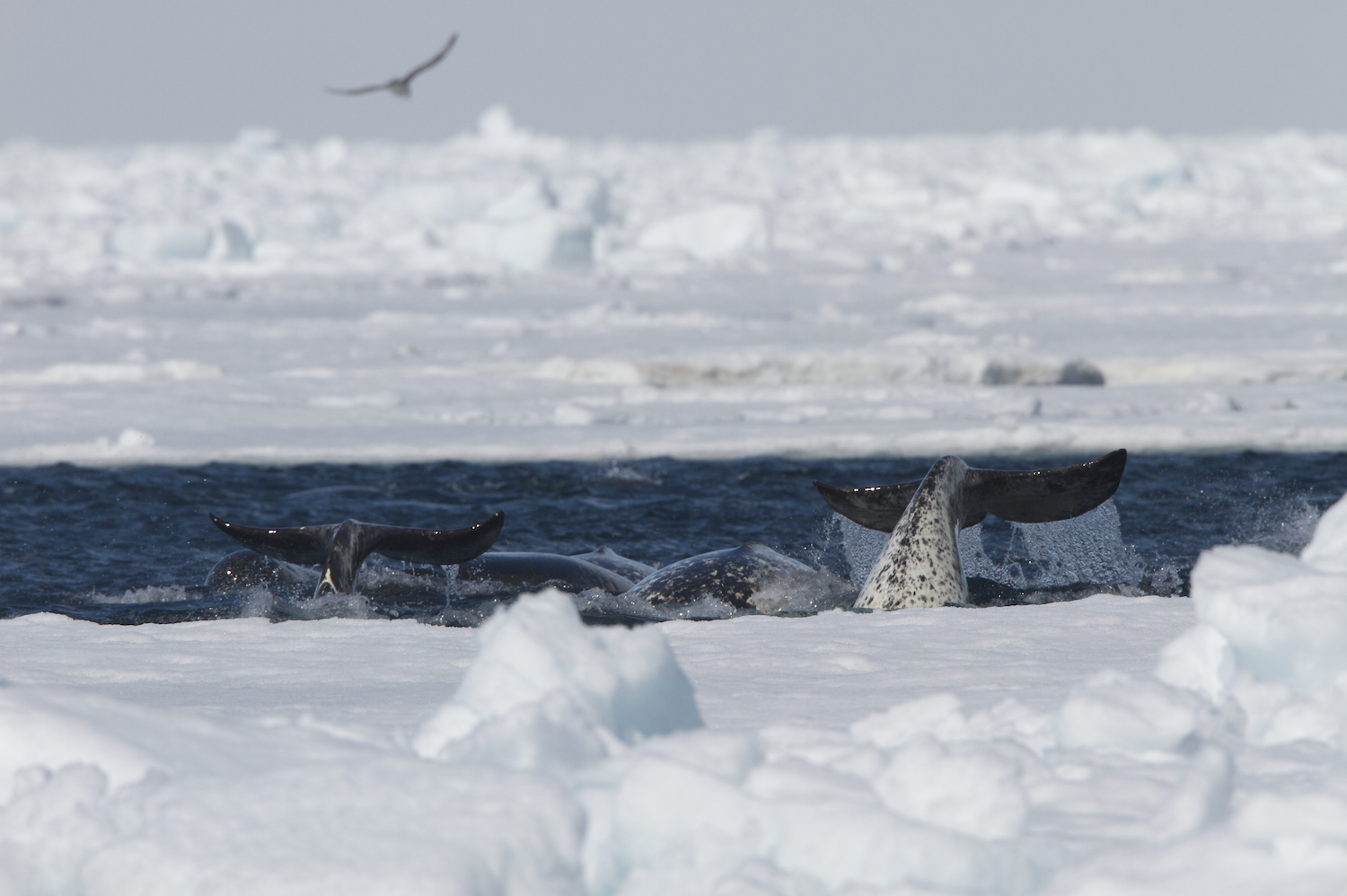Did you know that narwhal mothers give birth at the furthest extent of their annual migration?
Can you imagine being asked to travel hundreds of kilometres out of the Canadian Arctic channels when you were one month old?
Baby narwhal whales and their mothers are more than just spectacular to see, they are some of the most impressive migratory travellers. Learn the story of a mother and calf’s first migration.
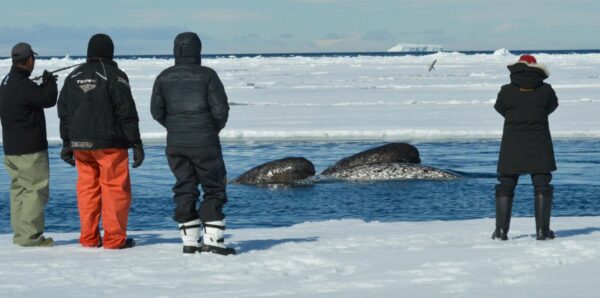
A Narwhal’s Childhood
Name for a baby narwhal: Calf
Born: Between June – August
Length: 1.6 metres / 5.2 feet
Colour: White or light grey
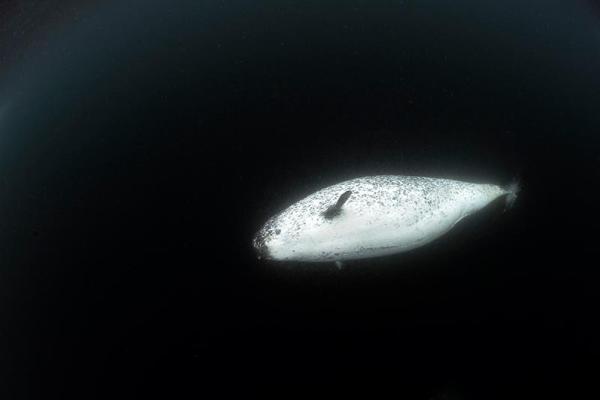
A female narwhal will have their first calf around the time they are six years old. In the spring, when sea ice is receding and forming pack ice, the male and female will mate. Big pods of narwhal are interacting and socializing during this time of year as they migrate.
The mother will give birth 14 months later between June and August. The summer is an ideal time since they are in the warm and isolated inlets and bays. The mother and calf have time to feed and nurse before they return to the deep Arctic channels to spend the winter.
Mothers give birth to a single baby, like most mammals, and will nurse the calf for 20 months. Due to the rich fat content of a mother’s milk, the calf’s thin layer of blubber can quickly thicken before the winter months.
The calf is highly dependent on their mother during this period and will remain within two body lengths of her at all times. There is a lot for a narwhal calf to learn from their mothers, like deep sea diving in the winter or find their summer feeding grounds through a maze of melting ice channels.
Narwhal calves are born without their famous tusk, which is actually a tooth that grows throughout their life. Most males will grow a left tusk from their upper jaw but only 15 percent of females will grow a tusk. Roughly one in 500 males will grow two tusks.
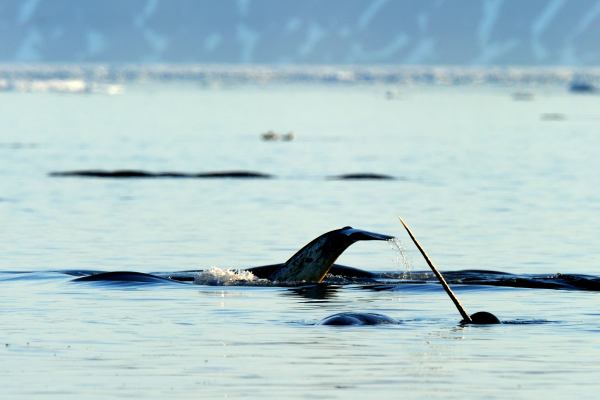
A Family Journey
It is summer and a newborn narwhal calf is just gaining an understanding of where he is before it’s time to start their migration.
About 75% of the world’s narwhal populations have spent their summer months throughout the inlets and estuaries of the Canadian Arctic’s archipelago’s. These islands have sheltered and shallow inlets for narwhal pods to feed on their favourite meal, arctic cod.
As the summer starts to turn into autumn the pod will have to travel back into the deep waters like Baffin Bay and Davis Bay. Their autumn migration has more haste than the spring migration since they are trying to navigate the channels before they freeze.
This means the newborn calf must stay close to their mother. There is a lot to learn and far to travel.
Tricks they will learn include measuring the oxygen levels in water to know which route to take or how to hide from predators.
Once the narwhal pods have made it into the open ocean they spend their winter below almost 90% frozen sea ice. They can dive down for around 25 minutes looking for halibut, squid, and shrimp.
When spring begins to emerge again, the narwhal pod will begin their journey back to the summer territory the already know so well.
As the narwhal gets older, they will become a darker colour and males can grow between 4 – 6 metres / 13 – 20 feet, while females will grow to about 3 metres / 11.5 feet.
It is an impressive thing what narwhal mothers will do and what is asked of newborn calves. Seeing them in person is truly incredible as they burst above the water surface. Noticing the early stages of a tusk growing in a narwhal that is turning from calf to an independent member of the pod. One of those calf’s will grow to be the leader of their pods and will have to find their way through the narrow cracks and leads in the ice.
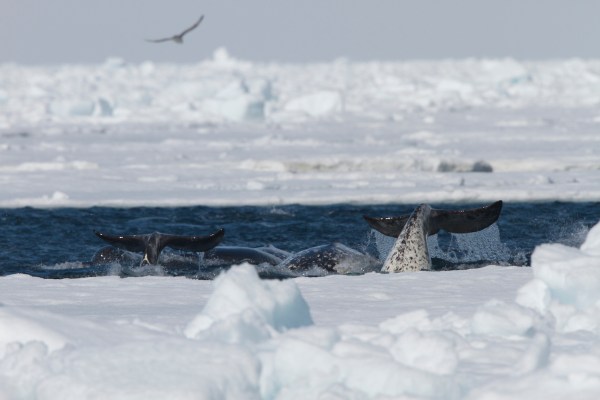
How You Can See This Narwhal Migration
If you want to witness the splendor of the narwhal migration in person than learn more about our Narwhal & Polar Bears, A Floe Edge Safari where we will take you right to the edge of the sea ice. Watch in comfort as they swim past you in pods ranging from 10 to 30, sometimes even more!
By: Mathew Whitelaw


